61 low relevance results shown for 'Force'. |1|2|3 | Next | View 100 per page
Showing low relevance matches only. Return to normal search results
Forces and Moving - The way objects move depends on a variety of factors including their size and shape ACSSU033 Year 2 Physical Sciences
Forces and Moving - A push or a pull affects how an object moves or changes shape ACSSU076 Year 4 Physical Sciences
Forces and Moving - Forces can be exerted by one object on another through direct contact or from a distance ACSSU117 Year 7 Physical Sciences
Forces and Machines - Change to an object’s motion is caused by unbalanced forces, including Earth’s gravitational attraction, acting on the object ACSSU229 Year 10 Physical Sciences
Forces and Motion - The motion of objects can be described and predicted using the laws of physics ACSCH018 Year 11 Chemical fundamentals
Properties and structure of atoms - Atoms can be modelled as a nucleus surrounded by electrons in distinct energy levels, held together by electrostatic forces of attraction between the nucleus and electrons; atoms can be represented using electron shell diagrams (all electron shells or val ACSCH032 Year 11 Chemical fundamentals
Properties and structure of materials - The characteristic properties of metals (for example, malleability, thermal conductivity, electrical conductivity) are explained by modelling metallic bonding as a regular arrangement of positive ions (cations) made stable by electrostatic forces of attra ACSCH056 Year 11 Molecular interactions and reactions
Intermolecular forces and gases - The shapes of molecules can be explained and predicted using three dimensional representations of electrons as charge clouds and using valence shell electron pair repulsion (VSEPR) theory ACSCH059 Year 11 Molecular interactions and reactions
Intermolecular forces and gases - Data from chromatography techniques (for example, thin layer, gas and highperformance liquid chromatography) can be used to determine the composition and purity of substances; the separation of the components is caused by the variation of strength of the ACSCH060 Year 11 Molecular interactions and reactions
Intermolecular forces and gases - The behaviour of gases, including the qualitative relationships between pressure, temperature and volume, can be explained using kinetic theory ACSCH065 Year 11 Molecular interactions and reactions
Aqueous solutions and acidity - The solubility of substances in water, including ionic and molecular substances, can be explained by the intermolecular forces between species in the substances and water molecules, and is affected by changes in temperature ACSPH060 Year 11 Linear Motion and Waves
Linear motion and force - Uniformly accelerated motion is described in terms of relationships between measurable scalar and vector quantities, including displacement, speed, velocity and acceleration ACSPH061 Year 11 Linear Motion and Waves
Linear motion and force - Representations, including graphs and vectors, and/or equations of motion, can be used qualitatively and quantitatively to describe and predict linear motion ACSPH062 Year 11 Linear Motion and Waves
Linear motion and force - Vertical motion is analysed by assuming the acceleration due to gravity is constant near Earth’s surface ACSPH063 Year 11 Linear Motion and Waves
Linear motion and force - Newton’s Three Laws of Motion describe the relationship between the force or forces acting on an object, modelled as a point mass, and the motion of the object due to the application of the force or forces ACSPH064 Year 11 Linear Motion and Waves
Linear motion and force - Momentum is a property of moving objects; it is conserved in a closed system and may be transferred from one object to another when a force acts over a time interval ACSPH065 Year 11 Linear Motion and Waves
Linear motion and force - Energy is conserved in isolated systems and is transferred from one object to another when a force is applied over a distance; this causes work to be done and changes to kinetic and/or potential energy of objects ACSPH066 Year 11 Linear Motion and Waves
Linear motion and force - Collisions may be elastic and inelastic; kinetic energy is conserved in elastic collisions ACSPH102 Year 12 Gravity and electromagnetism
Electromagnetism - Electrostatically charged objects exert a force upon one another; the magnitude of this force can be calculated using Coulomb’s Law ACSPH108 Year 12 Gravity and electromagnetism
Electromagnetism - Magnets, magnetic materials, moving charges and currentcarrying wires experience a force in a magnetic field; this force is utilised in DC electric motors ACSPH100 Year 12 Gravity and electromagnetism
Gravity and motion - When an object experiences a net force of constant magnitude perpendicular to its velocity, it will undergo uniform circular motion, including circular motion on a horizontal plane and around a banked track ACSCH031 Year 11 Chemical fundamentals
Properties and structure of materials - The properties of ionic compounds (for example, high melting point, brittleness, ability to conduct electricity when liquid or in solution) are explained by modelling ionic bonding as ions arranged in a crystalline lattice structure with forces of attract ACSPH098 Year 12 Gravity and electromagnetism
Gravity and motion - The vector nature of the gravitational force can be used to analyse motion on inclined planes by considering the components of the gravitational force (that is, weight) parallel and perpendicular to the plane ACSPH103 Year 12 Gravity and electromagnetism
Electromagnetism - A positively charged body placed in an electric field will experience a force in the direction of the field; the strength of the electric field is defined as the force per unit charge ACSPH104 Year 12 Gravity and electromagnetism
Electromagnetism - Point charges and charged objects produce an electric field in the space that surrounds them; field theory attributes the electrostatic force on a point charge or charged body to the presence of an electric field ACSPH105 Year 12 Gravity and electromagnetism
Electromagnetism - When a charged body moves or is moved from one point to another in an electric field and its potential energy changes, work is done on or by the field
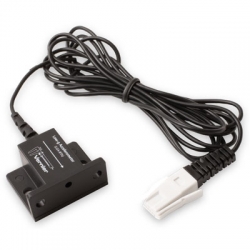
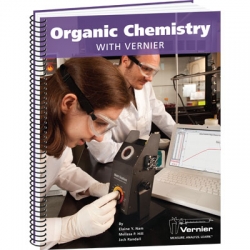

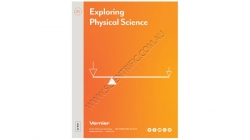
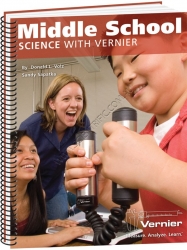

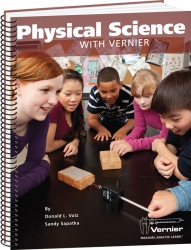

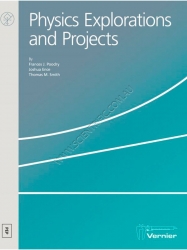

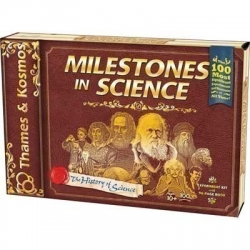
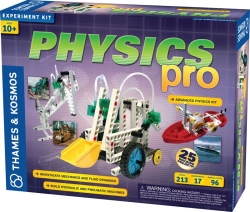
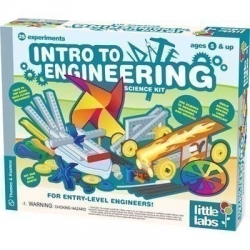

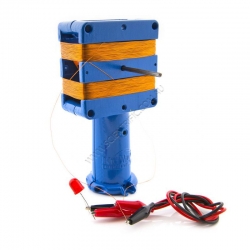
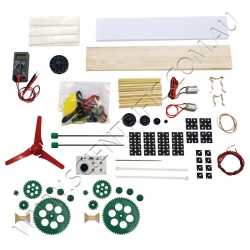
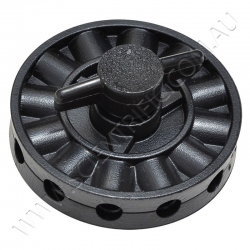

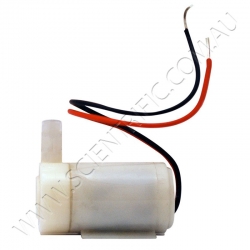
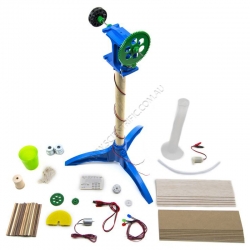
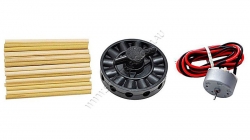
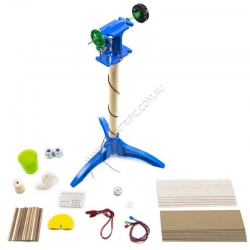


61 low relevance results shown for 'Force'. |1|2|3 | Next | View 100 per page
Showing low relevance matches only. Return to normal search results
Curriculum resources related to 'Force'
ACSSU005 Foundation Physical SciencesForces and Moving - The way objects move depends on a variety of factors including their size and shape ACSSU033 Year 2 Physical Sciences
Forces and Moving - A push or a pull affects how an object moves or changes shape ACSSU076 Year 4 Physical Sciences
Forces and Moving - Forces can be exerted by one object on another through direct contact or from a distance ACSSU117 Year 7 Physical Sciences
Forces and Machines - Change to an object’s motion is caused by unbalanced forces, including Earth’s gravitational attraction, acting on the object ACSSU229 Year 10 Physical Sciences
Forces and Motion - The motion of objects can be described and predicted using the laws of physics ACSCH018 Year 11 Chemical fundamentals
Properties and structure of atoms - Atoms can be modelled as a nucleus surrounded by electrons in distinct energy levels, held together by electrostatic forces of attraction between the nucleus and electrons; atoms can be represented using electron shell diagrams (all electron shells or val ACSCH032 Year 11 Chemical fundamentals
Properties and structure of materials - The characteristic properties of metals (for example, malleability, thermal conductivity, electrical conductivity) are explained by modelling metallic bonding as a regular arrangement of positive ions (cations) made stable by electrostatic forces of attra ACSCH056 Year 11 Molecular interactions and reactions
Intermolecular forces and gases - The shapes of molecules can be explained and predicted using three dimensional representations of electrons as charge clouds and using valence shell electron pair repulsion (VSEPR) theory ACSCH059 Year 11 Molecular interactions and reactions
Intermolecular forces and gases - Data from chromatography techniques (for example, thin layer, gas and highperformance liquid chromatography) can be used to determine the composition and purity of substances; the separation of the components is caused by the variation of strength of the ACSCH060 Year 11 Molecular interactions and reactions
Intermolecular forces and gases - The behaviour of gases, including the qualitative relationships between pressure, temperature and volume, can be explained using kinetic theory ACSCH065 Year 11 Molecular interactions and reactions
Aqueous solutions and acidity - The solubility of substances in water, including ionic and molecular substances, can be explained by the intermolecular forces between species in the substances and water molecules, and is affected by changes in temperature ACSPH060 Year 11 Linear Motion and Waves
Linear motion and force - Uniformly accelerated motion is described in terms of relationships between measurable scalar and vector quantities, including displacement, speed, velocity and acceleration ACSPH061 Year 11 Linear Motion and Waves
Linear motion and force - Representations, including graphs and vectors, and/or equations of motion, can be used qualitatively and quantitatively to describe and predict linear motion ACSPH062 Year 11 Linear Motion and Waves
Linear motion and force - Vertical motion is analysed by assuming the acceleration due to gravity is constant near Earth’s surface ACSPH063 Year 11 Linear Motion and Waves
Linear motion and force - Newton’s Three Laws of Motion describe the relationship between the force or forces acting on an object, modelled as a point mass, and the motion of the object due to the application of the force or forces ACSPH064 Year 11 Linear Motion and Waves
Linear motion and force - Momentum is a property of moving objects; it is conserved in a closed system and may be transferred from one object to another when a force acts over a time interval ACSPH065 Year 11 Linear Motion and Waves
Linear motion and force - Energy is conserved in isolated systems and is transferred from one object to another when a force is applied over a distance; this causes work to be done and changes to kinetic and/or potential energy of objects ACSPH066 Year 11 Linear Motion and Waves
Linear motion and force - Collisions may be elastic and inelastic; kinetic energy is conserved in elastic collisions ACSPH102 Year 12 Gravity and electromagnetism
Electromagnetism - Electrostatically charged objects exert a force upon one another; the magnitude of this force can be calculated using Coulomb’s Law ACSPH108 Year 12 Gravity and electromagnetism
Electromagnetism - Magnets, magnetic materials, moving charges and currentcarrying wires experience a force in a magnetic field; this force is utilised in DC electric motors ACSPH100 Year 12 Gravity and electromagnetism
Gravity and motion - When an object experiences a net force of constant magnitude perpendicular to its velocity, it will undergo uniform circular motion, including circular motion on a horizontal plane and around a banked track ACSCH031 Year 11 Chemical fundamentals
Properties and structure of materials - The properties of ionic compounds (for example, high melting point, brittleness, ability to conduct electricity when liquid or in solution) are explained by modelling ionic bonding as ions arranged in a crystalline lattice structure with forces of attract ACSPH098 Year 12 Gravity and electromagnetism
Gravity and motion - The vector nature of the gravitational force can be used to analyse motion on inclined planes by considering the components of the gravitational force (that is, weight) parallel and perpendicular to the plane ACSPH103 Year 12 Gravity and electromagnetism
Electromagnetism - A positively charged body placed in an electric field will experience a force in the direction of the field; the strength of the electric field is defined as the force per unit charge ACSPH104 Year 12 Gravity and electromagnetism
Electromagnetism - Point charges and charged objects produce an electric field in the space that surrounds them; field theory attributes the electrostatic force on a point charge or charged body to the presence of an electric field ACSPH105 Year 12 Gravity and electromagnetism
Electromagnetism - When a charged body moves or is moved from one point to another in an electric field and its potential energy changes, work is done on or by the field
Products related to 'Force'
Whiteboard Markers Auspen 12 Red Bullet Tipped
Only 2 packs still available
A box of 12 red, bullet tipped whiteboard markers.
These high quality, Xylene free, Australian designed AusPen® whiteboard markers offer both financial savings and environmental advantages because they are durable, refillable and have replaceable nibs to create less waste and ...
Order code: SC2108

Vernier Low-g Accelerometer
VERNIER LOW-G ACCELEROMETER
Vernier's most popular accelerometer is the best choice for most acceleration experiments including Newton’s second law, simple harmonic motion and the relationship between acceleration and force. It can also be used to study one-dimensional mo...
Order code: LGA-BTA

Organic Chemistry with Vernier
ORGANIC CHEMISTRY WITH VERNIER
Organic Chemistry with Vernier is a lab book containing experiments designed for use with Vernier data-collection technology in tertiary organic chemistry courses. Experiments cover a broad range of topics and techniques including compound i...
Order code: CHEM-O

Organic Chemistry with Vernier - Electronic Version
ORGANIC CHEMISTRY WITH VERNIER - ELECTRONIC
Organic Chemistry with Vernier is a lab book containing experiments designed for use with Vernier data-collection technology in tertiary organic chemistry courses. Experiments cover a broad range of topics and techniques includi...
Order code: CHEM-O-E

Vernier Exploring Physical Science - E Version
VERNIER PHYSICAL SCIENCE EBOOK
Explore various physical science topics in basic chemistry and physics from matter and energy to motion and forces with your Years 4-8 Middle School students. Collect, share and analyze sensor data with Vernier's free Graphical Analysis 4 so...
Order code: MSB-PS-E

Middle School Science with Vernier
MIDDLE SCHOOL SCIENCE WITH VERNIER
Middle School Science with Vernier was written specifically for students in grades 6-8. It is a lab book containing 38 experiments in earth science, life science and physical science, making use of ten different Vernier middle school sen...
Order code: MSV

Middle School Science with Vernier - Electronic Version
MIDDLE SCHOOL SCIENCE WITH VERNIER
Middle School Science with Vernier was written specifically for students in grades 6-8. It is a lab book containing 38 experiments in earth science, life science and physical science, making use of ten different Vernier middle school sen...
Order code: MSV-E

Physical Science with Vernier
PHYSICAL SCIENCE WITH VERNIER
Physical Science with Vernier is a lab book containing 40 ready-to-use experiments for physical science in grades 6-10 that are perfect for introductory physical science and integrated science classes. Experiments are included for 12 Vernier ...
Order code: PSV

Physical Science with Vernier - Electronic Version
PHYSICAL SCIENCE WITH VERNIER
Physical Science with Vernier is a lab book containing 40 ready-to-use experiments for physical science in grades 6-10 that are perfect for introductory physical science and integrated science classes. Experiments are included for 12 Vernier ...
Order code: PSV-E

Vernier Physics Explorations and Projects
VERNIER PHYSICS EXPLORATIONS AND PROJECTS
Vernier Physics Explorations and Projects is a collection of laboratory investigations aligned to the USA Next Generation Science Standards (NGSS). Most included investigations set up a situation for students to explore and analyz...
Order code: PEP

Vernier Physics Explorations and Projects - Electronic Version
VERNIER PHYSICS EXPLORATIONS AND PROJECTS - ELECTRONIC
Vernier Physics Explorations and Projects is a collection of laboratory investigations aligned to the USA Next Generation Science Standards (NGSS). Most included investigations set up a situation for students to explo...
Order code: PEP-E

Milestones in Science
The 100 Most Significant Experiments and Discoveries of All Time.
Embark on an active research expedition through the history of science and technology with this Thames and Kosmos kit. Learn about famous scientists and inventors, like Archimedes, Copernicus, Einstein, W...
Order code: 625719

Physics Pro
ADVANCED PHYSICS KIT.
The Physics Pro advanced physics kit is the biggest, most advanced physics kit from Thames and Kosmos. Other kits in the Thames & Kosmos Physics Series teach various aspects of physics through the process of building models and conducting expe...
Order code: 625313

Little Labs: Intro to Engineering
An exciting new kit in the Little Labs line from Thames and Kosmos. Intro to Engineering welcomes young children to the field of engineering with 25 experiments and building projects in five sections. By engaging in hands-on activities, children will learn how engineers apply the...
Order code: 602086

ProScope 50X Lens
PROSCOPE 50X LENS
Preferred by science educators and law enforcement investigators, the 50x lens is the best base lens to start with for almost any use.
Order code: BT-50

KidWind Simple Hand Generator Kit
KIDWIND SIMPLE HAND GENERATOR
The KidWind Simple Hand Generator (simpleGEN) is an easy-to-build AC generator that allows students to explore the basics of electrical generator design.
With the simpleGEN you can demonstrate Faraday’s law, light LEDs and perform experime...
Order code: KWA0051


KidWind Science Wind Project
KIDWIND SCIENCE WIND PROJECT
Make a unique science project from hard-to-find parts such as generators, hubs, gears, pulleys and power measurement devices. You’ll need to provide the tower materials, ideas, creativity and muscle to build a device that harnesses the power o...
Order code: KWA0024


KidWind Wind Turbine Hub
Discontinued, only available in packs of 3 or 10: order codes KW-WTH3 or KW-WTH10.
KIDWIND WIND TURBINE HUB This KidWind 12-hole crimping hub made from recycled plastic allows you to turn any DC generator into a wind turbine. The hub will press fit onto the shaft of many small DC generators; just attach your own blades and begin experimenting w... Order code: KWH0005-1
KIDWIND WIND TURBINE HUB This KidWind 12-hole crimping hub made from recycled plastic allows you to turn any DC generator into a wind turbine. The hub will press fit onto the shaft of many small DC generators; just attach your own blades and begin experimenting w... Order code: KWH0005-1

KidWind Mini Water Pump with Cylinder
The KidWind Low Voltage Water Pump with tubing and cylinder is a great way to demonstrate and make visible power output from KidWind wind and solar kits. It makes comparing different turbine designs easy; simply measure how high different turbines can pump water using this mini p...
Order code: KWH0014-C

KidWind Mini Water Pump with Tubing
Last two future stock will be sold as KW-PUMP
KIDWIND MINI WATER PUMP WITH TUBING
The KidWind low voltage water pump with tubing is a great way to demonstrate and make visible power output from KidWind wind and solar kits. It makes comparing different turbine designs easy; simply measure how high different turbines c...
Order code: KWH0016

KidWind Advanced Wind Experiment Kit (A0012)
KIDWIND ADVANCED WIND EXPERIMENT KIT
Perform all of the same investigations as the KW-BWX Basic Wind Experiment Kit with the ability to generate more power at higher voltages (0.5–20V). Discover advanced concepts of wind turbine technology including gearboxes and generato...
Order code: KW-AWX

KidWind Basic Turbine Building Parts
KIDWIND BASIC TURBINE BUILDING PARTS
Supplied in a sealable bag, the KidWind Hub, a motor/generator and 25 dowels are the bare-bones components to build your own experimental wind turbine. This package is great for students who don't want a ready-made wind turbine tower a...
Order code: KW-BTPART


KidWind Basic Wind Experiment Kit
KIDWIND BASIC WIND EXPERIMENT KIT
Explore wind energy affordably and easily. This kit, one of our most popular, allows young scientists to test a variety of blade designs, generate electricity (0.5 –3 V range) and lift weights. The Basic Wind Experiment Kit has all the ma...
Order code: KW-BWX

KidWind Advanced Wind Experiment Kit Class Pack
KIDWIND ADVANCED WIND EXPERIMENT CLASSROOM KIT
Perform all of the same investigations as the KW-BWX Basic Wind Experiment Kit with the ability to generate more power at higher voltages (0.5–20V). Discover advanced concepts of wind turbine technology including gearboxes an...
Order code: KW-AWXC

KidWind Basic Turbine Building Parts 10 Pack
KIDWIND BASIC TURBINE BUILDING PARTS 10 PACK
This classroom pack is great for students who don’t want a ready-made wind turbine. It is ideal for educators who want an affordable way for each students or student group to do hands-on experiments with wind power.
Includes...
Order code: KW-BTPART10

61 low relevance results shown for 'Force'. |1|2|3 | Next | View 100 per page



 ,
,